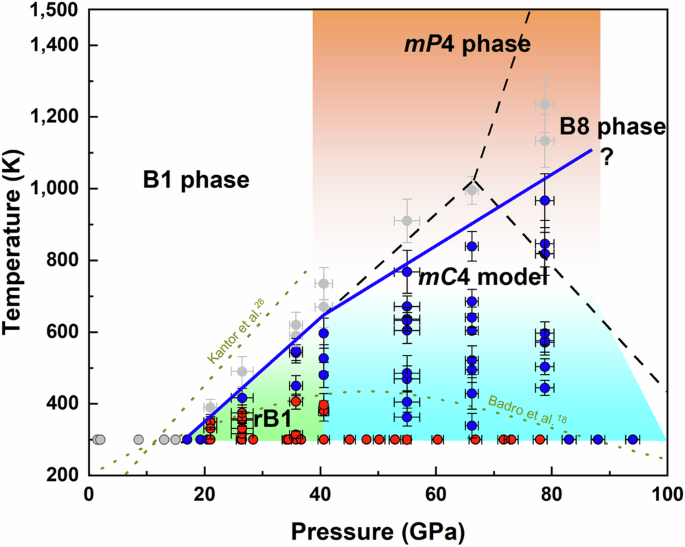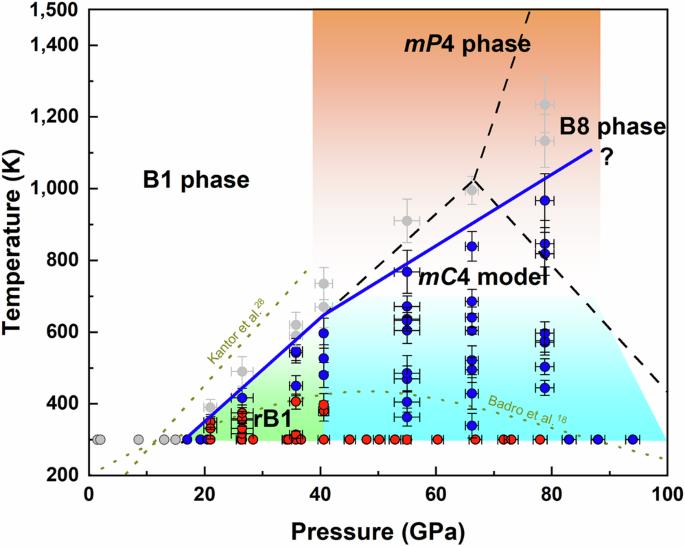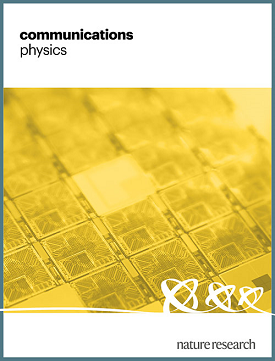Monoclinic distortion and magnetic transitions in FeO under pressure and temperature
IF 5.4
1区 物理与天体物理
Q1 PHYSICS, MULTIDISCIPLINARY
引用次数: 0
Abstract
Fe1-xO, although chemically simple, possesses a complex structural and magnetic phase diagram. The crystal structures of Fe1-xO and its magnetic properties at extreme conditions are still a matter of debate. Here, we performed a systematic investigation on Fe0.94O up to 94 GPa and 1700 K using synchrotron X-ray diffraction and synchrotron Mössbauer source spectroscopy. We observe a transition of Fe0.94O to the monoclinic phases above 40 GPa and at high temperatures and use the group theory analysis of the observed phases to discuss their properties and their relation to the ambient pressure phases. The Mössbauer spectra of the rhombohedral and the room temperature monoclinic phase contain a component attributed to Fe2.5+, caused by the electron exchange between the Fe3+ defect and neighboring Fe2+ atoms. Our results present a structural and magnetic transitional pressure-temperature diagram of Fe1-xO and show the complex physicochemical properties of simple Fe1-xO binary oxide under extreme conditions. This work concerns a systematic study of Fe1-xO employing complementary methods of powder and single-crystal X-ray diffraction and synchrotron Mössbauer source spectroscopy up to 94 GPa and 1700 K. It presents a structural and magnetic transitional pressure-temperature diagram of Fe1-xO and demonstrates the complex physicochemical properties of simple Fe1-xO binary oxide under extreme conditions.


氧化铁在压力和温度下的单斜变形和磁性转变
Fe1-xO 虽然化学性质简单,但具有复杂的结构和磁性相图。Fe1-xO 的晶体结构及其在极端条件下的磁性能仍是一个争论不休的问题。在此,我们利用同步辐射 X 射线衍射和同步辐射莫斯鲍尔源光谱对高达 94 GPa 和 1700 K 的 Fe0.94O 进行了系统研究。我们观察到在 40 GPa 以上和高温条件下,Fe0.94O 向单斜晶相的转变,并利用对观察到的晶相的群论分析来讨论它们的性质及其与常压晶相的关系。斜方晶相和室温单斜晶相的莫斯鲍尔光谱包含一个归因于 Fe2.5+ 的成分,这是由 Fe3+ 缺陷和邻近 Fe2+ 原子间的电子交换引起的。我们的研究结果展示了 Fe1-xO 的结构和磁性过渡压力-温度图,并显示了简单的 Fe1-xO 二元氧化物在极端条件下的复杂物理化学性质。
本文章由计算机程序翻译,如有差异,请以英文原文为准。
求助全文
约1分钟内获得全文
求助全文
来源期刊

Communications Physics
Physics and Astronomy-General Physics and Astronomy
CiteScore
8.40
自引率
3.60%
发文量
276
审稿时长
13 weeks
期刊介绍:
Communications Physics is an open access journal from Nature Research publishing high-quality research, reviews and commentary in all areas of the physical sciences. Research papers published by the journal represent significant advances bringing new insight to a specialized area of research in physics. We also aim to provide a community forum for issues of importance to all physicists, regardless of sub-discipline.
The scope of the journal covers all areas of experimental, applied, fundamental, and interdisciplinary physical sciences. Primary research published in Communications Physics includes novel experimental results, new techniques or computational methods that may influence the work of others in the sub-discipline. We also consider submissions from adjacent research fields where the central advance of the study is of interest to physicists, for example material sciences, physical chemistry and technologies.
 求助内容:
求助内容: 应助结果提醒方式:
应助结果提醒方式:


